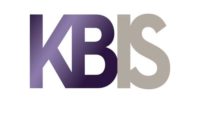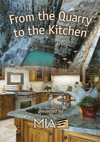HACKETTSTOWN, NJ -- Today, the National Kitchen & Bath Association (NKBA) and John Burns Real Estate Consulting (JBREC) released their Q1 2020 Kitchen & Bath Market Index (KBMI). Each quarter, NKBA surveys professionals in building/construction, manufacturing, design and retail sales on industry conditions, with this iteration focused largely on the effects of COVID-19. Respondents say the pandemic has an impact of 8.08 (on a scale of 1 to 10, with 1 being no impact and 10 being significant impact) on their business, with retail sales (8.3) and building/construction (8.29) most affected, compared to design (7.96) and manufacturing (7.84).
Kitchen and bath professionals list economic uncertainty and fear of recession as their current primary challenges, demoting cost of materials, availability of skilled labor and labor costs — the top three concerns last quarter — to seventh, eighth and 11th on the list, respectively.
While the impact of COVID-19 on kitchen and bath professionals is undeniable, there are indicators of the recovery to come. For instance, though 69% of all kitchen and bath projects have been impacted by the crisis, the majority of these (48%) were postponements, as opposed to cancellations.
Additional key takeaways from KBMI’s first-quarter report include:
- A strong January and February bolstered Q1: On average, those surveyed reported a 2.8% decline in sales in the first quarter of 2020 compared to the same period in 2019. The relatively small margin here may be attributed to what was a strong January and February for many. Manufacturing and retail sales actually saw minor increases (1% and 0.3%, respectively) in the quarter. Based on current conditions, members expect a YOY sales decrease of 13.7% for 2020.
- Anticipated stabilization ahead: New JBREC data shows cancellation rates are stabilizing, after bottoming out at 14% in early April. By mid-April, that had decreased to 12.6%, and 11.9% by May 1. Interior remodeling jobs tend to have a lower cancellation rate than exterior work, and for peak earners, aged 45 to 64, interior cancellation rates are less than 10%. First-time buyers are most likely to cancel projects, while retirees are most likely to postpone until 2021.
- Predictions for a return to normalcy: When asked when they expected the economy would largely reopen and demand for their services and products would return to normal levels, the majority of those surveyed (68%) predicted a recovery by September, though 25% are unsure whether conditions will improve until at least 2021. Not surprisingly, one of the most optimistic group is retailers, 42% of whom expect demand for their products to return to normal before the end of June, which aligns with the timeline for states reopening now and in the coming weeks.
“The first quarter of 2020 brought unprecedented change -- not just to our industry, but the economy as a whole,” said Bill Darcy, NKBA CEO. “We know that many kitchen and bath businesses, especially smaller ones, are hurting, and we hope that this report and its findings provide insights on how their fellow industry members are responding. And while the global health and economic crisis has negatively affected our members -- there’s no doubt about that -- we are pleased to see that work does continue and there are signs of brighter times ahead.”
“The KBMI always holds great value for our clients, but this particular report is especially vital as the timeline for economic and housing recovery is so unknown,” added Todd Tomalak, senior vice president of research for JBREC. “As we all adapt, the KBMI is a look into an industry that is one of the quickest to recover in times of crisis and recession, and can be used as a gauge for other economic indicators, such as housing and consumer confidence.”
The following findings by sector shed additional light on the day-to-day impact of the COVID-19 crisis on the kitchen and bath industry:
- While 48% of building/construction firms report that 20% or less of active projects remain on schedule, another 34% say at least 60% or more of their jobs are moving ahead as planned.
- Manufacturers are operating at 52% capacity on average. More than half (54%) say orders are moving ahead, though at a slower pace than usual, while 46% had customers cancel orders.
- One in four retail sales companies say closing their showroom due to Coronavirus guidelines had the biggest impact on their business, as closures make finding new leads a challenge. Still, some retailers have benefited from remote sales and curbside pickup of DIY products and supplies.
- Some designers predict sheltering-in-place orders may lead to long-term gains in the space, with more consumers are interested in renovation jobs. In fact, 8% say demand for future remodeling projects is higher than before the crisis and 17% say demand has not changed. While over half (52%) of design firms have temporarily closed their brick-and-mortar locations, many are turning to new technology that may improve future business practices, such as e-design and virtual consults. Designers have also noted that COVID-19 had lesser impact on supply chains that source American-made products.







